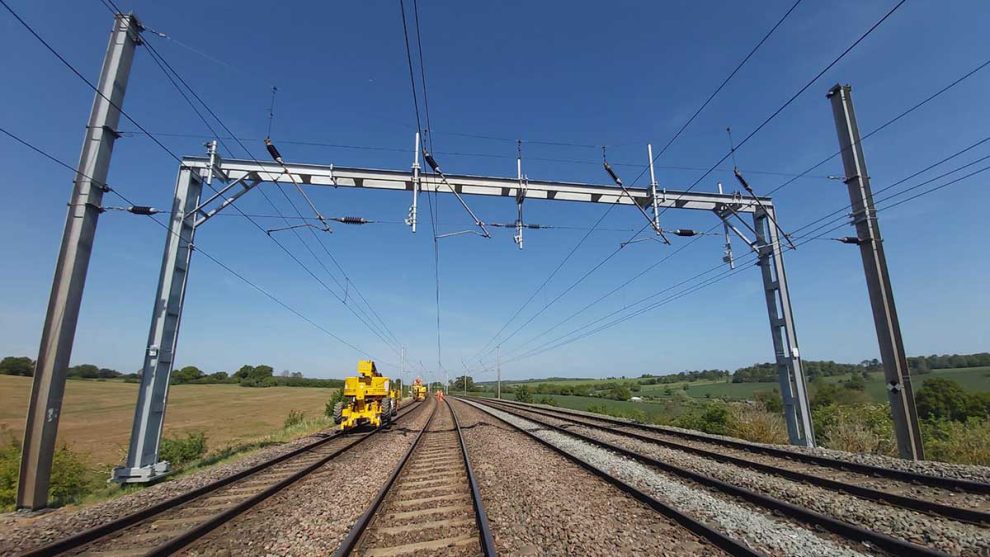DISCUSSIONS about electrifying the mainline between Cardiff and Swansea are “back on the table”, the leader of Swansea Council said.
Cllr Rob Stewart made the remark at a green economy conference in Swansea.
The UK’s Department for Transport has not commented directly on what the Swansea Labour said. But it said a group called the Wales Rail Board was identifying priority proposals for new infrastructure.
The Coalition Government led by Conservative Prime Minister David Cameron promised in 2012 to electrify the mainline between London Paddington and Swansea, but the Cardiff to Swansea section was shelved five years later because project costs had overrun significantly.
It was seen by many as a blow to Wales’s second city, with the then-AM for South Wales West, Dr Dai Lloyd, of Plaid Cymru, saying: “Wales doesn’t stop at Cardiff, but the Tories clearly think it does. Upgrading our infrastructure beyond Cardiff is crucial if we are to strengthen the economy across Wales.”
UK ministers said the introduction of “bi-mode” trains which switch from electric to diesel power would run just as quickly between Cardiff and Swansea as electric-powered ones. Electrifying the section between the two cities was based on a cost of around £430 million, in 2012-23 prices.
Transport consultant and academic Mark Barry told the Local Democracy Reporting Service that the case for electrification had never really gone away. He said lighter electric trains accelerated faster and had a better environmental footprint than bi-mode and diesel trains.
Professor Barry, of Cardiff University’s school of geography and planning, said one of the most expensive elements of electrifying a rail line was raising bridges to accommodate overhead power lines. However, he said an alternative method using permanently earthed sections which had been deployed on the Core Valley Lines in South East Wales reduced the length of overhead power lines needed, and could have potential for the Swansea to Cardiff mainline. “You might be able to take some of the cost out,” he said.
Professor Barry said Cardiff to Swansea electrification was one of the aims of leaders in South Wales and the West of England who were pressing for improved journey times and service frequency via a collaboration called Western Gateway. The “elephant in the room”, he said, was funding.
The Local Democracy Reporting Service asked the Department for Transport if the Cardiff to Swansea electrification proposal was being looked at again, and if so what stage discussions were at and whether any preliminary costings had been done.
It didn’t answer the questions directly, but said: “The Wales Rail Board has begun work to identify priority proposals for infrastructure in Wales, with more information on specific projects in due course.”
The Wales Rail Board, which was was set up in 2021, has senior representation from the Welsh Government, Department for Transport, Office of the Secretary of State for Wales, Transport for Wales and Network Rail, and is responsible for deciding and developing priority schemes. Its meetings are held behind closed doors and no agendas or minutes are published. The board doesn’t hold the purse strings for new rail investment – that remains under existing arrangements, with the UK Government largely responsible.
Meanwhile, the leaders of Swansea, Carmarthenshire, Neath Port Talbot and Pembrokeshire councils are seeking support for transport improvements in the four counties, including faster trains to and from West Wales, the creation of new stations on the Swansea and District Line, and a new station at Cockett on the track between Swansea and Burry Port. These are key elements of a wider transport project for the region called the Swansea Bay and West Wales Metro.
The proposed new stations on the Swansea and District Line, which mainly carries freight, are Pontlliw, Felindre, Morriston and Winch Wen, with a reopened one also at Landore. Work by Transport for Wales has taken place to identify a preferred location for each station. Cllr Stewart said the case for building them was the strongest for any rail investment project in Wales.
“We are seeking support from the UK and Welsh governments and the Wales Rail Board to process delivery of the Metro now that Transport for Wales has largely completed all of the necessary feasibility work,” he said.



















